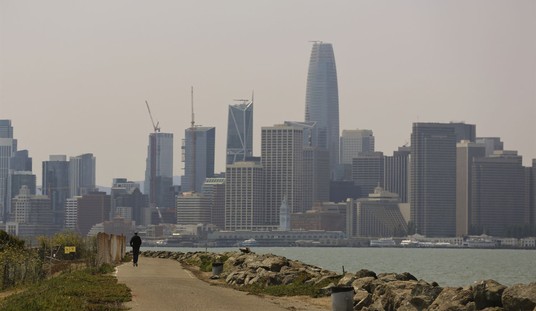Scott Rasmussen’s polls have included internal demographics on age, political affiliation, ideology, ethnicity, and income for years, but recently Rasmussen added another subset for tracking: the political class. It’s actually more a measure of populism, given the structure of the formula Rasmussen uses to define “political class”:
The questions used to calculate the Index are:
— Generally speaking, when it comes to important national issues, whose judgment do you trust more – the American people or America’s political leaders?
— Some people believe that the federal government has become a special interest group that looks out primarily for its own interests. Has the federal government become a special interest group?
— Do government and big business often work together in ways that hurt consumers and investors?
To create a scale, each response earns a plus 1 for the populist answer, a minus 1 for the political class answer, and a 0 for not sure.
Those who score 2 or higher are considered a populist or part of the Mainstream. Those who score -2 or lower are considered to be aligned with the Political Class. Those who score +1 or -1 are considered leaners in one direction or the other.
The political class, therefore, are the anti-populists. Populists presumably range widely from some John Edwards followers to Tea Party activists to libertarians (and perhaps especially Libertarians). Anyone who has a beef with elites and cabals fall outside of the political class. That’s important to note when considering Scott Rasmussen’s latest essay on the state of a great divide in American politics, and what it means:
However, a new Rasmussen Reports national telephone survey finds that just 28% of voters believe increased government spending is good for the economy. Fifty-two percent (52%) believe increased government spending is bad for the economy, while 12% say it has no impact. Eight percent (8%) are not sure.
This suggests that for 72% of voters, asking about a trade-off between cutting spending and helping the economy doesn’t make sense. A look at the demographics shows that the trade-off makes sense for only one group– thePolitical Class. Among that group, 67% believe increased government spending would be good for the economy. …
Earlier data shows the same perspective on deficits. Only 17% of voters believe that increasing the federal deficit is good for the economy. For everybody else, the vast majority, the question of a trade-off between helping the economy and cutting the deficit makes no sense. Most voters (56%) believe, in fact, that cutting the deficit is good for the economy. So rather than a trade-off, voters see cutting the deficit as a way to kill two birds with one stone.
Be sure to read it all. The thrust of the piece is that the anti-populists have more or less entrenched themselves in Washington, and mainly under the guise of Edwards-style populism. That may have had a boom moment in 2008, but the electorate has quickly grown tired of big-spending, big-government solutions that by definition require a class of elites to make decisions for citizens that they used to make for themselves. Not surprisingly, the elitists don’t want to let go of that power.
If this election has a theme, it’s going to be the rejection of the elites and a return to a form of populism with a long streak in American history — the demand of citizens to their government to get the hell out of their lives.








Join the conversation as a VIP Member